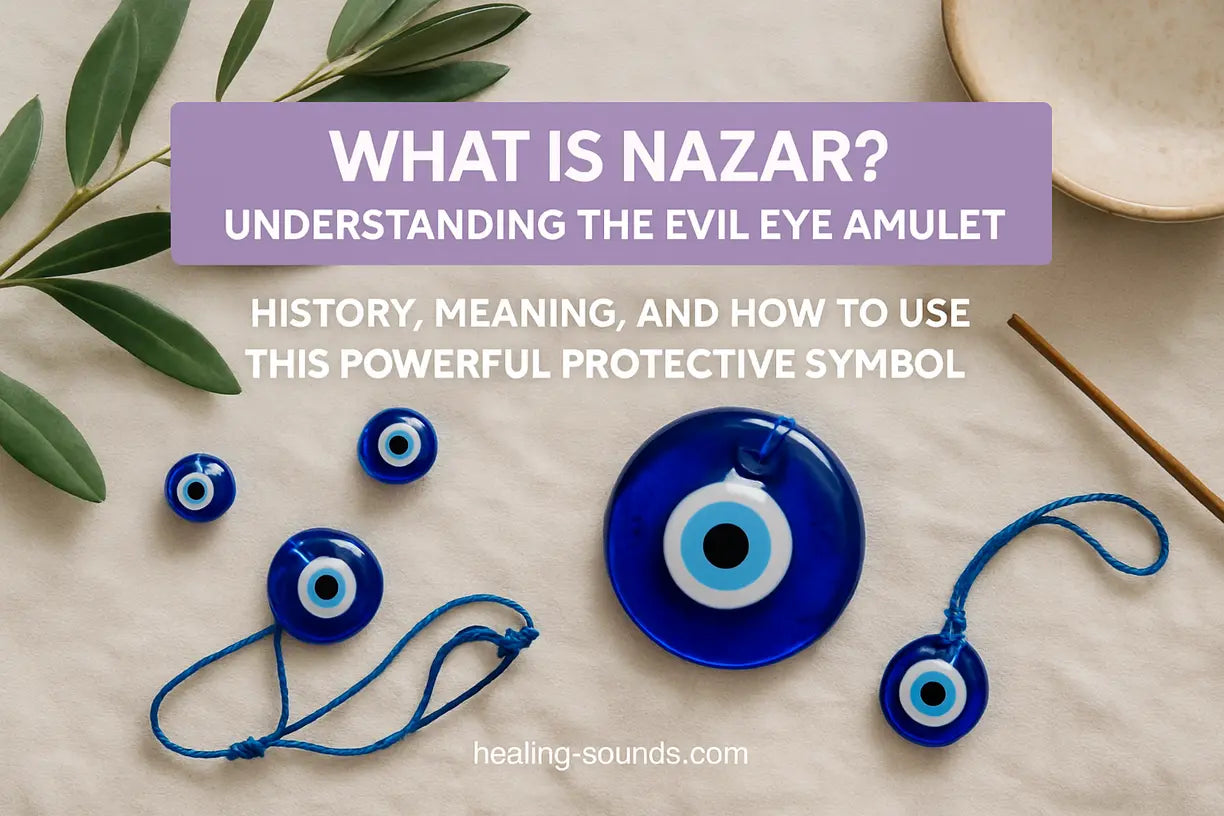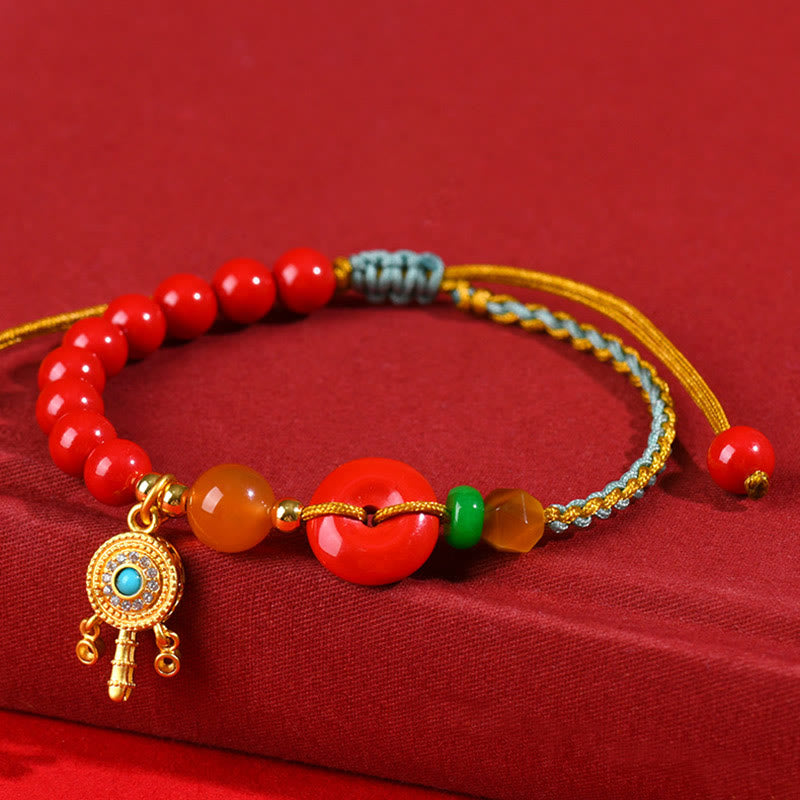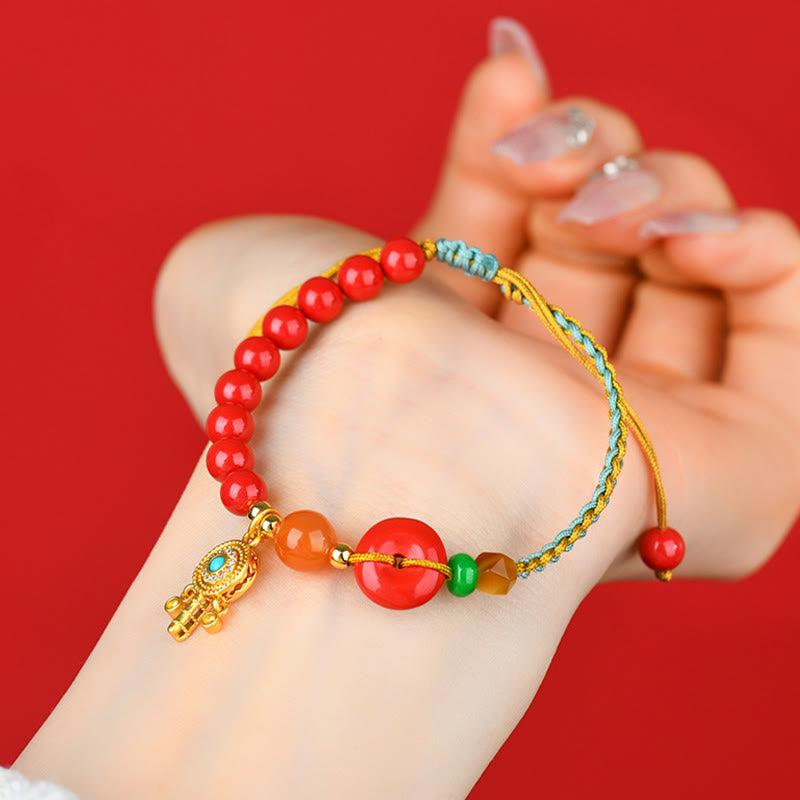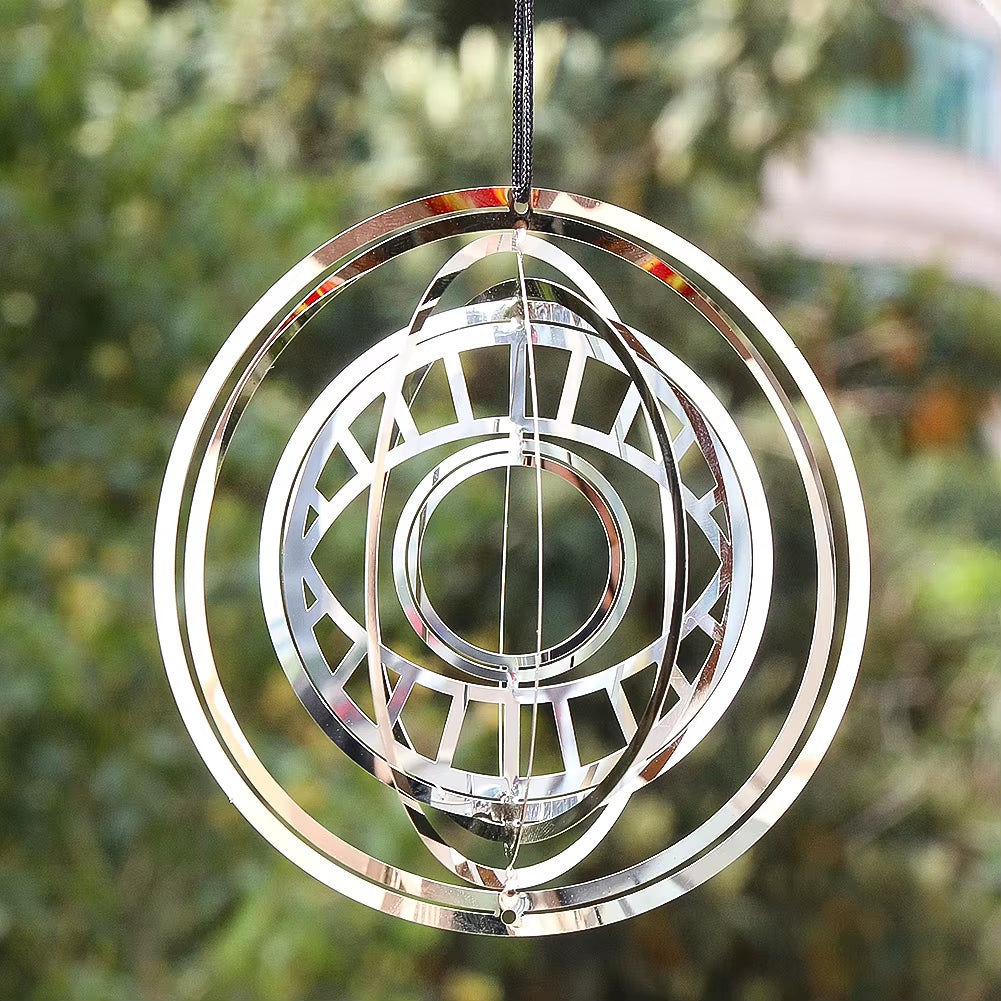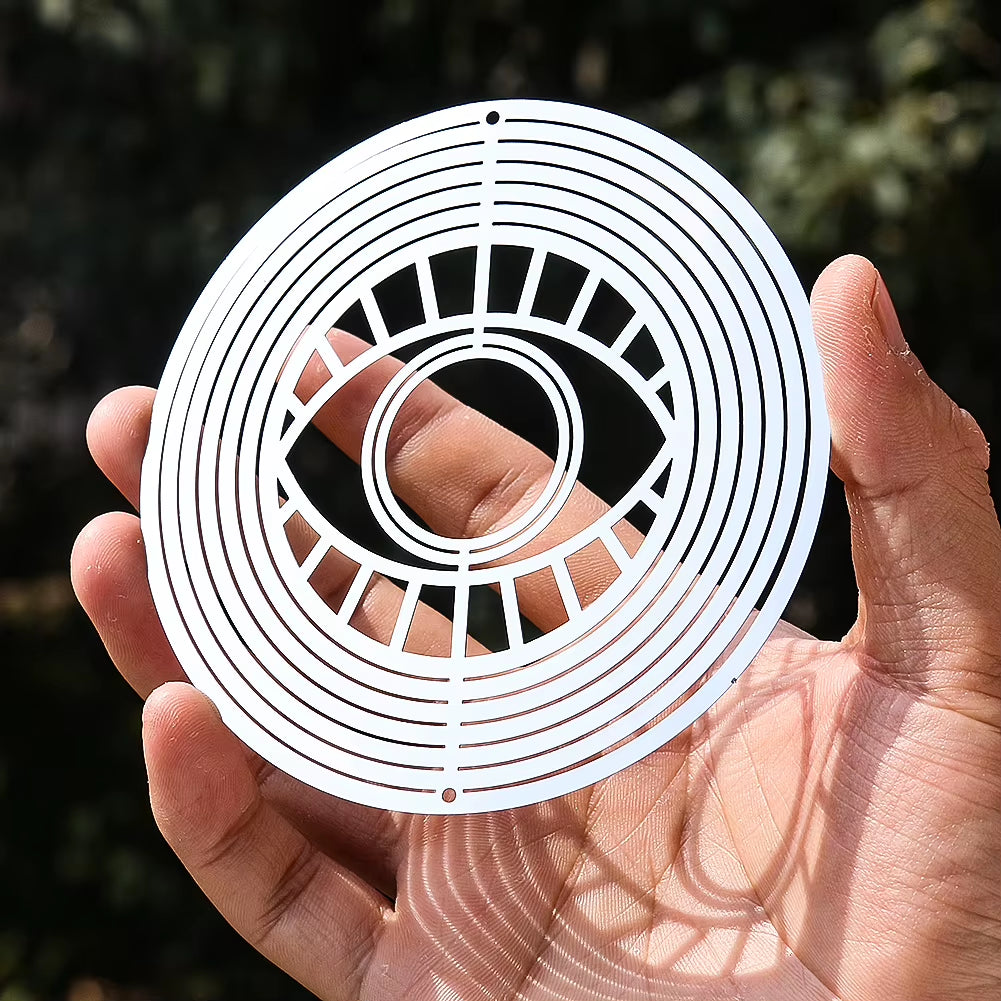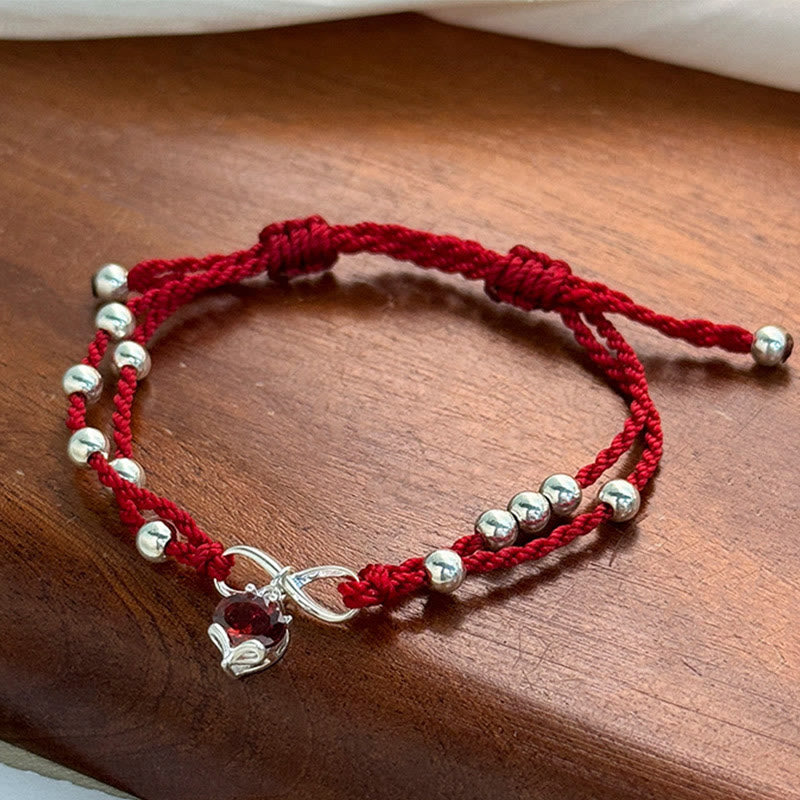Avez-vous déjà ressenti une soudaine vague de malaise ou de malheur, vous demandant peut-être si des forces invisibles étaient à l'œuvre ? Depuis des siècles, les cultures du monde entier cherchent des moyens de se protéger des énergies négatives, et l'un des symboles les plus durables de cette protection est le nazar . Cette amulette captivante, souvent reconnaissable à son motif bleu et blanc saisissant en forme d'œil, est plus qu'un simple bijou décoratif ; c'est un puissant emblème censé éloigner le « mauvais œil ». Dans ce guide, nous plongerons dans l'univers fascinant du nazar, en explorant sa signification, ses origines et la manière dont ce symbole ancien continue d'offrir une protection spirituelle et une expression élégante dans la vie moderne. Si vous souhaitez savoir comment exploiter ses vertus protectrices, vous êtes au bon endroit pour comprendre la profonde signification du nazar contre le mauvais œil .
Qu'est-ce que Nazar ? L'ancien symbole de protection
Le terme « nazar » (نظر) vient de l'arabe et signifie « vue », « surveillance », « attention » ou « regard ». Il fait spécifiquement référence à la croyance au mauvais œil – un regard malveillant ou un regard d'envie qui peut infliger malheur, malchance ou blessure à la personne visée. L' amulette nazar , aussi connue sous le nom de « pierre du mauvais œil » ou « œil turc », est conçue pour renvoyer cette énergie néfaste vers son émetteur, agissant ainsi comme un bouclier de défense spirituelle. La forme la plus reconnaissable est une perle de verre artisanale, généralement ornée de cercles concentriques bleu foncé, bleu clair, blancs et parfois noirs, imitant un œil.
La croyance fondamentale est que l'amulette nazar absorbe l'énergie négative, se brisant ou se fissurant souvent lorsqu'elle a rempli son devoir protecteur en interceptant une puissante malédiction ou une mauvaise volonté. Cette rupture n'est pas perçue comme une perte, mais comme le signe que l'amulette a protégé son porteur ou son propriétaire. Comprendre la signification du nazar est la première étape pour apprécier son pouvoir durable.
Les origines et la signification culturelle de l'amulette Nazar
Le concept du mauvais œil et l'utilisation d'amulettes protectrices comme le nazar remontent à des millénaires, trouvant leurs racines dans l'Égypte, la Grèce et la Rome antiques. Sa présence est répandue, notamment dans les pays méditerranéens, au Moyen-Orient, en Amérique latine et dans certaines régions d'Asie. Si l'emblématique perle de verre bleue est fortement associée à la Turquie, des talismans similaires en forme d'œil ont été découverts sur divers sites archéologiques, témoignant d'une profonde préoccupation humaine envers les forces négatives invisibles et d'un désir de protection.
Différentes cultures ont adapté le nazar à leurs traditions, mais la croyance fondamentale en son pouvoir de repousser la négativité demeure. On l'offre couramment en cadeau aux nouveau-nés, aux nouveaux foyers ou aux nouvelles entreprises pour leur apporter protection et chance. Le symbole du nazar n'est pas seulement une relique du passé ; c'est une tradition vivante qui conserve une profonde importance culturelle et spirituelle pour des millions de personnes à travers le monde. Pour une analyse plus approfondie du contexte historique, des ressources comme l' article de l'Encyclopédie de l'histoire mondiale sur le mauvais œil offrent de précieux éclairages.

Comment fonctionne le Nazar ? Comprendre ses vertus protectrices
On pense que le pouvoir protecteur du nazar provient de sa forme en forme d'œil. Cet « œil » est censé affronter et neutraliser le regard néfaste du mauvais œil. Lorsqu'une personne regarde une personne ou un objet avec envie ou malice, l'amulette du nazar est censée capter cette énergie négative et la détourner. C'est une sorte d' armure spirituelle , constamment vigilante face aux menaces invisibles. Sa couleur bleue caractéristique est également significative, souvent associée à la vérité, à la divinité et à la protection dans de nombreuses cultures.
Il est important de distinguer le mauvais œil lui-même (le regard malveillant) et l' amulette nazar (le charme protecteur). Le mauvais œil est perçu comme la source de négativité, tandis que le nazar est l'outil de protection . Imaginez-le comme un miroir qui renvoie les mauvaises intentions. Nombreux sont ceux qui pensent que l'efficacité du nazar est également liée à la foi de celui qui le porte en son pouvoir, créant ainsi une synergie entre l'amulette et ses croyances personnelles.

Bracelet unisexe en fil de cinabre avec boucle de paix et mauvais œil
$28.90 $41.90
Portez ce bracelet amulette nazar vibrant pour une protection quotidienne contre le mauvais œil et un style spirituel significatif.
Explorer le produitNazar dans la vie moderne : protection élégante et bien-être spirituel
Aujourd'hui, l' amulette nazar a transcendé son contexte purement traditionnel pour devenir un symbole populaire dans la mode, la joaillerie et la décoration intérieure du monde entier. On retrouve des motifs nazar sur des bracelets, des colliers, des boucles d'oreilles, des porte-clés et même sur des vêtements. Cette adoption moderne permet de conserver sur soi un symbole protecteur ancien, alliant signification spirituelle et style contemporain. Porter un nazar peut être une déclaration de foi personnelle, un lien avec un héritage culturel ou simplement un désir d'énergie positive supplémentaire au quotidien.
De nombreuses personnes déclarent ressentir un sentiment de paix et de sécurité en portant ou en arborant un nazar. Effet placebo ou véritable intervention spirituelle, le réconfort qu'il procure est indéniable pour ceux qui croient. Il nous rappelle constamment de rester positifs et d'être attentifs aux énergies que nous projetons et recevons. L'attrait durable du nazar contre le mauvais œil réside dans sa promesse simple et profonde : protection contre le mal et porte-bonheur.

Protégez votre aura et votre espace avec ces articles inspirés de Nazar
$20.90
$26.90
Apportez une protection contre le mauvais œil Nazar à votre espace extérieur avec ce spinner oculaire turc cinétique et fascinant. En savoir plus ➔
$35.90
$51.90
Combinez l'ancienne tradition du fil rouge et le charme inspiré de Nazar pour éloigner la négativité avec élégance chaque jour. En savoir plus ➔
Nazar est-il réel ? Croyances, superstitions et signification personnelle
La question de l'authenticité du nazar se résume souvent à une question de croyances personnelles et de perspectives culturelles. Pour beaucoup, il s'agit d'une conviction spirituelle profondément ancrée, tandis que pour d'autres, il peut être perçu comme une superstition ou une tradition culturelle. Scientifiquement, il n'existe aucune preuve empirique du mauvais œil ou des pouvoirs protecteurs du nazar. Cependant, l'impact psychologique de telles croyances peut être bien réel. Croire en un symbole protecteur comme le nazar peut favoriser un sentiment de sécurité, réduire l'anxiété et promouvoir une attitude positive, ce qui peut en soi être bénéfique. Les études interculturelles sur le folklore, comme celles menées par des institutions comme le programme de folklore de l'Université de Californie à Berkeley , soulignent l'omniprésence de ces croyances dans les sociétés humaines.
En fin de compte, la « réalité » de la protection nazar réside dans le sens et le réconfort qu'elle procure à l'individu. Si le port d'une amulette nazar aide à se sentir plus en sécurité, plus confiant ou plus proche de son héritage, alors elle est précieuse, indépendamment des preuves empiriques. Le pouvoir de la croyance elle-même est une force significative dans l'expérience humaine.
Aspects clés de la croyance Nazar :
- Déviation de la négativité : Le but principal est de conjurer le mal causé par des regards envieux ou malveillants.
- Symbole de vigilance : Le symbole de l'œil représente la vigilance constante contre les dangers invisibles.
- Patrimoine culturel : Pour beaucoup, il s’agit d’un lien avec des traditions ancestrales et des pratiques spirituelles.
- Source de réconfort : procure un réconfort psychologique et un sentiment de protection spirituelle.
Conclusion : Adoptez le pouvoir protecteur de Nazar
Le nazar est bien plus qu'un bel objet ; c'est un symbole imprégné d'histoire, de culture et d'une profonde signification spirituelle. Comprendre ce qu'est le nazar et son rôle d'amulette protectrice contre le mauvais œil nous permet d'apprécier sa pertinence durable dans un monde où nous cherchons constamment à préserver notre bien-être et à cultiver une énergie positive. Que vous soyez attiré par son riche héritage culturel, son attrait esthétique ou sa promesse de protection spirituelle, le nazar offre une manière unique de se connecter à la sagesse ancienne et au style moderne.
Chez Healing Sounds, nous chérissons le pouvoir de ces symboles. Nous vous invitons à découvrir notre collection d'amulettes nazar et autres objets de protection, soigneusement sélectionnés pour apporter paix, style et énergie positive à votre vie. Adoptez la tradition, portez votre nazar avec intention et portez son regard protecteur avec vous.
Questions fréquemment posées sur Nazar et la protection contre le mauvais œil
Porter un « nazar » sur soi signifie généralement que l'on est considéré comme la cible du mauvais œil – un regard malveillant ou une énergie négative envoyée par quelqu'un, souvent par envie ou jalousie. On pense que cela peut potentiellement causer malheur, maladie ou malchance. L'amulette nazar est utilisée pour s'en protéger.
L'émoji ou symbole 🧿 représente l' amulette Nazar elle-même. Il symbolise la protection contre le mauvais œil. Son motif, généralement un œil bleu, est censé détourner l'énergie négative et éloigner le mauvais sort envoyé par les regards malveillants.
Le « mauvais œil » est la force néfaste elle-même – une malédiction ou un malheur que l'on croit transmis par un regard malveillant, généralement suscité par l'envie. Le « nazar » (ou nazar boncuğu) est l' amulette ou le talisman créé pour se protéger du mauvais œil. Ainsi, le mauvais œil est la menace, et le nazar est le bouclier.
Les croyances concernant la « rupture » ou l'élimination du nazar (effet du mauvais œil) varient considérablement selon les cultures. Les pratiques courantes incluent les prières, les rituels utilisant des herbes ou de l'encens spécifiques, la récitation de textes sacrés ou l'utilisation d'amulettes protectrices comme le nazar lui-même. Certains croient que si une amulette de nazar se brise, elle absorbe l'énergie négative et « brise » ainsi la malédiction. Cet article s'intéresse à la compréhension de l'amulette de nazar comme outil de protection.
L'authenticité du nazar est une question de croyances personnelles et d'interprétations culturelles. Son pouvoir n'est scientifiquement prouvé. Cependant, pour des millions de personnes, il s'agit d'une conviction spirituelle profondément ancrée et d'une tradition culturelle importante. Le réconfort psychologique et le sentiment de sécurité qu'il procure peuvent être bien réels et bénéfiques pour les croyants. Nombreux sont ceux qui le considèrent comme un symbole de protection et d'énergie positive.

